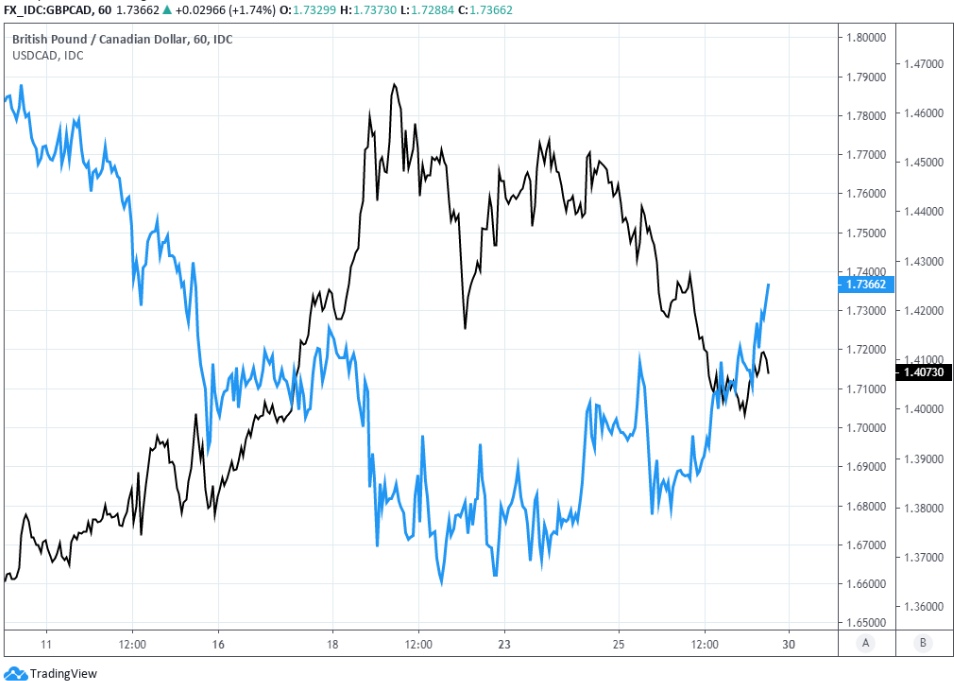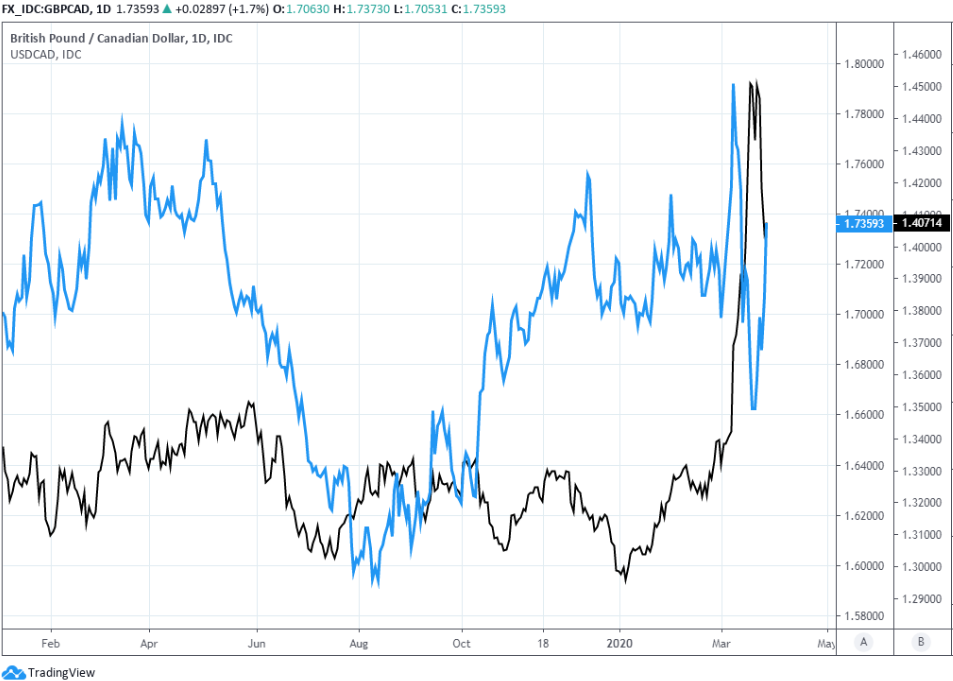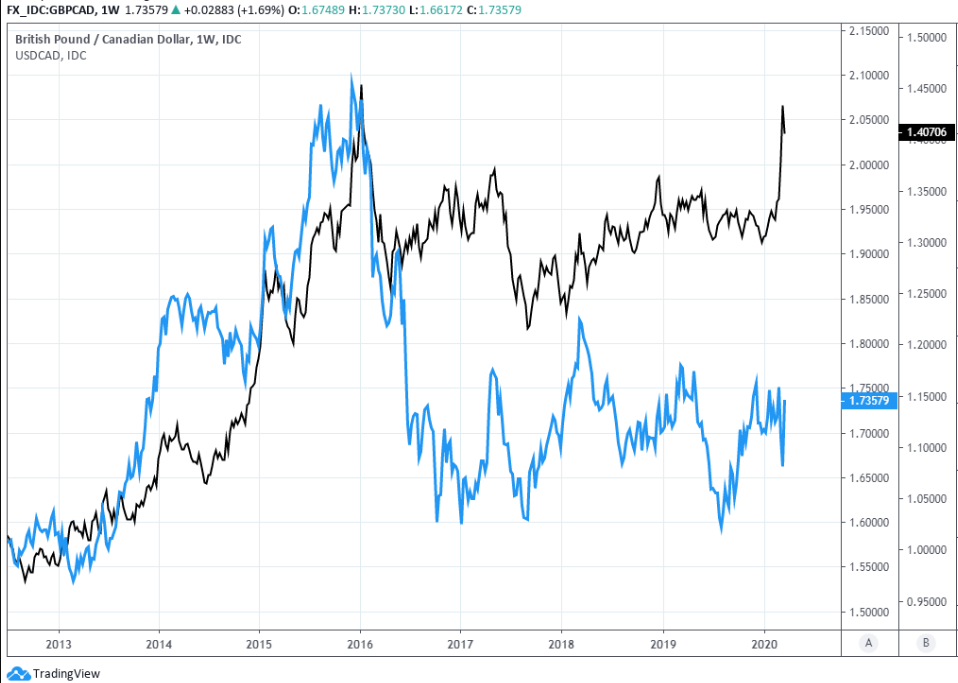Canadian Dollar Jilted by BoC Over Pint of QE at the 'Effective Lower Bound'
- Written by: James Skinner
-

Image © Bank of Canada
- GBP/CAD Spot rate: 1.7367 +1.46% on publication
- Indicative bank rates for transfers: 1.6779-1.6901
- Transfer specialist indicative rates: 1.7127-1.7232 >> Get your quote now
The Canadian Dollar was left jilted on Friday by a Bank of Canada (BoC) decision to cut the cash rate to the "effective lower bound" and to launch a quantitative easing program that will see it buy government debt each week, aiding the Pound-to-Canadian Dollar rate recovery.
Canada's central bank cut the cash rate by 50 basis points to 0.25%, which it characterises as the floor for interest rates, in another unscheduled decision that was aimed at supporting the economy and financial system through the coronavirus crisis. The BoC also went an additional step further than it has done before when telling markets that it will buy C$5bn of government bonds of varying maturities each week to augment its support for the real economy.
"The central bank also announced a new Commercial Paper Purchase Program (CPPP) meant to help alleviate strains short-term funding markets for businesses," says Royce Mendes, an economist at CIBC Capital Markets. "There is room for the quantitative easing purchases to grow even larger. While central bank stimulus can't bring the economy back to life on its own, the Bank of Canada's actions will help alleviate some of the pain and support the recovery, whenever that begins."

Above: Pound-to-Canadian Dollar rate shown at hourly intervals, alongside USD/CAD rate (black line).
The BoC's C$5bn weekly quantitative easing would be equivalent to around 0.7% of total federal government debt as measured by Statistics Canada in December 2019, and if continued over a calendar year would see the bank buy up around 37% of that earlier debt pile. Although meaningful in appearance, that percentage would be roughly in line with ownership numbers for the Bank of England, Federal Reserve and others. The true percentage is also likely to be lower given expected increases in debt issuance.
Action came as some Canadian money markets were said by the BoC to have freezed over in recent weeks in spite of the bank's earlier aggressive actions to ensure a steady supply of cheap finance to companies and households as citizens hunker down in isolation from each other in the hope of preventing the coronavirus from spreading too fast. Self isolation and social distancing is causing severe disruption to cash flows and credit supply as well as hardship for companies and households alike.
"This aggressive response was increasingly expected given the moves seen by other central banks around the world and the financial market tensions," says James Knightley, chief international economist at ING. "Canada is heavily exposed to the global downturn given nearly a third of economic activity is tied to global trade while the plunge in commodity prices compounds the problems for Canada’s economy. This poses huge risks for employment and investment, particularly in the oil and gas industries."

Above: Pound-to-Canadian Dollar rate shown at daily intervals, alongside USD/CAD rate (black line).
Coronavirus has levelled global interest rates in almost as indiscriminate a manner as it has spread across the globe from developed economy to developing economy and from one continent to another since escaping the borders of China in January and Asia in February. The BoC, alongside the Federal Reserve across the border, were the first to act in response to signs of the unprecedented disruption that's now got a significant majority of global supply and demand for goods and services sat almost idle.
Canada's Dollar was only until very recently propped up by the highest bond yields among major economies, which helped the Loonie to outperform all comparable rivals last year, although the Loonie has flown south in 2020 and at a rate of knots since the beginning of March when oil prices collapsed by more than half and as European economies took themselves offline in order to combat the coronavirus. Those economic shutdowns, which reached the U.S. and Canada in the last fortnight, have now condemned the already-lowered cash rate to a stint at the effective lower bound and the Canadian Dollar to a stretch near 20-year lows against the U.S. Dollar.
"Dollar/CAD has managed to find a bid against the 1.3990-1.4030 chart support zone amidst the broad USD buying flows we’re seeing in London, but we’re not so sure how long this lasts given yesterday’s technically destructive breakdown for the USD against all the major currencies," says Eric Bregar, head of FX strategy at Exchange Bank of Canada.

Above: Pound-to-Canadian Dollar rate shown at weekly intervals, alongside USD/CAD rate (black line).
Canada's Dollar was trading near to recent lows ahead of Friday's announcement but in a resilient and upwardly biased manner, although it was jilted by the decision and sent tumbling against both the Pound and greenback.
The Pound-to-Canadian Dollar rate has recovered its poise after a strong effort from the Fed to crimp U.S. Dollar demand that had forced GBP/USD down to multi-decade lows earlier in March, amid a global exodus from financial assets like stocks and bonds including those trading in the City of London.
Sterling, much like the Norwegian Krone, suffered disproportionately in the sell-off that was so severe it appeared to all but dismantle the usual pecking order among major currencies, whose relative performance is often determined in part by correlations with risk assets like stocks and oil. Typically those correlations would see the Pound-to-Canadian Dollar rate rising in times of strife, but Sterling's weakness saw it dragged sharply lower earlier this month.
"GBPCAD has experienced heightened volatility through March but the GBP has barely made it outside of the trading range that prevailed through late 2019 and into early 2020," says Juan Manuel Herrera, a strategist at Scotiabank. "We note that the longer term charts are shaping up to be potentially GBP bullish if the GBP can stabilize and recover ground in the next few weeks/months."





